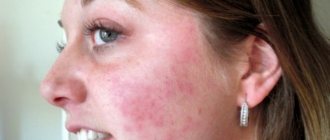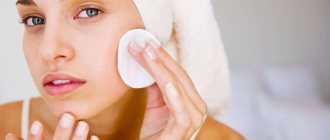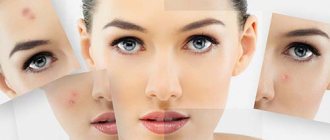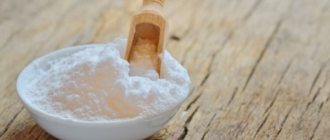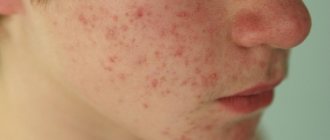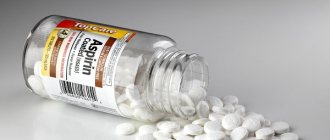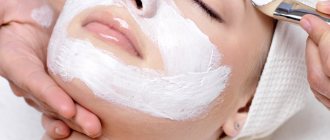- Prevention
- Types of scars
- Cosmetology techniques
- Price
- Surgical methods
- Disguise
- Video
- Photo
The joy of victory over acne is overshadowed by acne scars that remain in place of ulcers and give the skin an unkempt appearance. The mechanism of formation of scars, scars and spots , which are also called post-acne , comes down to the following: the abscess at the mouth of the sebaceous gland matures, fills with pus and opens. The wound formed at the site of the pimple is covered with a film, which dries, forming a crust and after a while falls off, leaving behind areas that are depressed or, on the contrary, protruding above the surface of the skin. Similar processes affect dozens of pimples; areas of skin with an altered structure merge, forming scars.
Acne marks: how to prevent the formation of spots, scars and scars
Following a few simple rules will help you control the situation and avoid the appearance of skin defects:
- You cannot squeeze out the contents of ulcers on your own , since pathogenic bacteria, when they get on healthy tissues, cause them to become infected. In addition, when a non-specialist squeezes out pimples, he usually damages the walls of the sebaceous glands, which leads to the penetration of pus into the deep layers of the dermis. In both cases, instead of a crust, indicating the attenuation of the process, a new focus of inflammation is most likely formed.
- During the acute stage of acne, you should not cleanse the skin with scrubs or do mechanical peelings . The essence of this prohibition is the high probability of opening ulcers and “insemination” of nearby healthy tissues by microbes.
- You need to watch your diet and include vegetables, fruits and nuts in your diet . We recommend products rich in antioxidant vitamins that improve skin condition (C, E, A) and zinc, which has healing properties. To reduce the risk of scarring after acne, you should limit your consumption of “fast” carbohydrates - sugar, bread and white rice. Also, drinking alcohol and coffee has a negative effect on the condition of the skin.
- It is recommended to spend less time in the sun and not allow sun rays to hit areas of the skin where there are traces of acne. The skin in such places is very delicate, and therefore easily covered with pigment spots.
- Home skin care will help you avoid acne scars , for which you should use moisturizing preparations rich in vitamins, antioxidants and minerals.
Attention! Drying crusts should never be forcibly removed - they should fall off on their own - this is the most important condition, the fulfillment of which will allow you to avoid scars and acne spots.
Zinc-based ointment
Zinc ointment is rightfully considered an effective composition in the fight against scars. It dries and tightens wounds, making scars less noticeable. This is especially true for scars that appeared relatively recently.
Before using the drug, read the manufacturer's recommendations. It is important to use the product strictly according to the instructions, without violating the duration of exposure and the amount of product applied. Otherwise, there is a risk of burns, which will significantly complicate the removal of scars.
After use, zinc ointment must be washed off with a cotton pad soaked in filtered water. As a rule, the product is kept on the skin for no longer than 20 minutes. Repeated therapy is carried out every 4 hours.
how to remove capillaries on the face at home
Types of scars after acne
What kind of scars will remain after acne depends on how the restoration (regeneration) of skin tissue proceeds. There are three types of scars left after acne:
- atrophic scars - most often left after acne, have the appearance of pits, can be of different shapes, depths and sizes.
- hypertrophic scars - formed from connective tissue, dense to the touch, not prone to growth.
- keloid scars - appear due to excessive growth of connective tissue; usually irregular in shape, smooth, purple in color.
Wax
Beeswax can help make acne scars less noticeable. The product can be purchased at a specialized honey store. The technology of use is similar to treating leather with paraffin.
Take a small amount of the composition, melt it in a convenient way (microwave, water or steam bath). After this, cool the mixture so that it does not burn the epidermis. Dip a cotton swab into the melted wax and blacken the composition with it.
Cover the scarred areas with small pieces of gauze. The duration of wax exposure varies between 40-60 minutes. After this, carefully remove the gauze pieces. If the product cannot be removed, pour vegetable oil under the wax, wait 10 seconds, remove.
Removing acne scars: which method is more effective?
It is very difficult to get rid of scars after acne; it is not without reason that it is believed that it is easier to prevent post-acne than to subsequently eliminate skin defects using cosmetic techniques that injure the skin, for example, such as:
Laser resurfacing is a modern method of eliminating acne marks, in which the upper layer of skin in the defect area is treated with a laser beam, achieving complete destruction in order to start the processes of restoration and renewal of the skin. Laser resurfacing is one of the most effective ways to get rid of scars left at the site of opened acne.
Dermabrasion is a rather painful procedure consisting of mechanical exfoliation of the upper layers of the skin using special attachments coated with a layer of abrasive, which is most often used diamond chips or aluminum oxide. The essence of the method, as with laser resurfacing, lies in the destruction of modified tissues for the purpose of their subsequent renewal.
Chemical peels (acid and enzyme) are often advertised as effective methods for eliminating acne marks. However, you should know that only deep acid peels, for example, phenolic or trichloroacetic acid, can destroy scar tissue and renew the skin in the defect area. Medium and superficial peels will not eliminate scars, although they will significantly improve the texture of the skin and give it a fresh appearance.
Injection techniques are a salvation for those who need to quickly and painlessly correct the appearance of their skin after acne. Most often, injections of collagen and hyaluronic acid are used, which perfectly smooth the skin, but not for long - the effect lasts only for 3-6 months. The essence of these techniques is to fill the pits left by acne with substances natural to the skin.
Kalanchoe and vodka
Squeeze the juice from the Kalanchoe stems so that you get 30 ml. Add 40 g to the liquid. vodka, mix, pour into a bottle. Close the lid, place in a dark cupboard for 3 days, shake the mixture every 5 hours.
After the solution has infused, strain it through 5 layers of bandage. Soak a cotton swab in the tincture, treat the scars, and secure with an adhesive plaster. After half an hour, wash with slightly warm water.
how to get rid of purulent acne on the face
Surgical methods for getting rid of scars and scars after acne
Surgical intervention is rarely used and only in cases where other methods fail to get rid of defects, for example, if the scars occupy a large area and are of considerable depth. Most often used:
- undercutting - the scar is cut off from the underlying tissues to stimulate the formation of connective tissue that lifts the base of the scar;
- excision of scar tissue with the application of neat cosmetic sutures, which are easier to polish (laser or mechanical);
- Skin grafting is a radical method, and therefore is used only in extreme cases.
Contraindications
It will not be possible to remove a scar using one of the listed methods if:
- chronic skin pathologies;
- diseases affecting connective tissue;
- severe diabetes;
- infection;
- inflammatory process in the body;
- cancer or precancerous condition;
- epilepsy;
- pregnancy or lactation;
- intolerance to drugs and radiation used during the corrective procedure.
With a tendency to form keloid scars, any of the procedures, especially laser treatment, remains questionable. The problem must be solved individually.
Acne spots: remove or hide?
Scars and scars are the most severe consequences of acne, but no less troublesome are the spots remaining at the site of the opened pimple . At first, the spot has a bluish or red color, then it may turn pale or, on the contrary, darken and turn into a pigment spot. Methods for eliminating acne spots are still the same: medium mechanical and chemical peels (for example: milk, pyruvic, salicylic peels), laser resurfacing and dermabrasion.
Unfortunately, there is no quick way to get rid of acne spots ; the process can take several months or even years. When trying to hide acne marks, you should not rely only on foundation, which evens out skin tone but does not hide spots, but you should stock up on corrector pencils (concealers):
- green corrector (soft mint shade) – removes redness and is suitable for hiding red spots after acne;
- lilac corrector (lavender or lilac shade) – suitable for correcting yellow spots after acne, including age spots;
- blue corrector – used to neutralize brown acne spots;
- yellow corrector - helps hide cyanotic (red-blue or purple) spots, by the way, after acne most often they remain like that.
Paraffin (cosmetic)
Paraffin can be purchased at a specialized natural cosmetics store or pharmacy. Cut a small cube measuring 1.5*1.5 cm, place it on a dish, melt it in a steam bath or in the microwave. Dip a cotton swab into the mixture, scoop up a large amount of product and cover the scars with it.
Leave until completely dry (about 35-45 minutes), then remove excess with a cotton swab dipped in vegetable oil. Paraffin treatment is carried out every 5 hours. After the procedure, it is necessary to lubricate the skin with regenerating ointment.
Scars and scars after acne: photos before and after procedures
Citrus fruit
You can tighten scars with the help of citrus fruit pulp; lemon and grapefruit are considered the most effective. Cut the fruit in half so that the pulp extends beyond the zest. Wipe the areas of skin with scars with it, wait until it dries completely. After this, wash with slightly warm water and apply restorative ointment.
If desired, you can use freshly squeezed citrus juice. To do this, just squeeze the liquid out of half the fruit, then dip a cotton pad into it and treat the skin.
Pharmacy regenerating ointments are considered the most effective means of eliminating acne scars. Buy “Boro Plus”, “Solcoseryl”, “Panthenol”, “Levomekol” or another available drug. Consider folk recipes based on cosmetic clay, wax, paraffin, potassium permanganate, vodka, propolis, and Kalanchoe. Use chlorhexidine solution or citrus fruit juice.
how to get rid of red spots from acne
Home treatment
Time-tested folk remedies can be quite effective in preventing relapses and tumors.
Some folk remedies against keloids:
- Compresses and infusions of chamomile, geranium, St. John's wort, mint, yarrow, marshmallow root or larkspur, individually and in mixtures;
- Oils and extracts rich in vitamins, acids and antioxidants, for example, sea buckthorn, camphor, olive or melaleuca oil, known for its healing and healing properties;
- The well-known cabbage, in particular, crushed leaves of the plant with honey give a positive effect against colloidal scars.
Why does a scar form?
Keloids are divided into two groups according to their formation:
Primary (spontaneous)
These scars appear on apparently healthy skin for no apparent reason.
The appearance of such keloids can result from:
- Hormonal imbalances;
- Internal injuries;
- Pregnancy;
- Chronic diseases.
Typically, scarring occurs on the neck, back, chin and jaw line, ears, especially the earlobes.
Secondary (false)
Such scars occur in areas of previously damaged skin due to any injuries, skin lesions and ulcers. Wound healing is often inhibited by infection, causing inflammation and scarring.
The reasons include the following:
- Unprofessional surgical intervention;
- Injuries, cuts and wounds healed without proper care and supervision of a specialist;
- Consequences of severe skin diseases, such as acne.
Traditional medicine against post-acne
Many people prefer to use home remedies to treat acne scars, as they trust them more.
What recipes does traditional medicine offer to remove post-acne?
Peelings and scrubs. A homemade scrub for exfoliating the skin surface is made from ground Hercules, mixing it with egg white or kefir; from crushed egg shells with sea buckthorn oil, from cooled coffee grounds.
Peeling that helps to cope even with old raised scars. Pharmacy bodyagu powder is mixed with hydrogen peroxide, applied for 2-3 minutes, and washed off with cool water. A slight burning sensation during the procedure is normal, severe pain - the product must be removed immediately.
For those who suffer from rosacea or have delicate skin, masks are more suitable.
The most popular masks for acne scars.
- Clay. To 1 tablespoon of cosmetic blue or white clay, diluted with warm water, add 4 drops of rosemary essential oil.
- Honey-cinnamon. The ingredients are mixed in equal volumes to a thick puree.
- White clay - 1 tablespoon - diluted with a mixture of warm water and lemon juice.
You can make your own homemade cream for facial scars that evens out the skin after acne.
To do this, the knotweed is crushed together with the seeds, olive oil is added and the scars are lubricated.
Another cream - egg yolks are fried over an open fire until melted into an oily substance. It is applied to scars. Whitening cream is made from egg white, a tablespoon of lemon juice, essential oils of lavender, mint, cloves, and rosemary. Regularly washing your skin with the following products will help cope with hypertrophic scars.
Homemade lotion is made:
- from apple cider vinegar and water - proportions 1/3;
- aloe and cucumber juices – 1/1;
- cranberry juice and water – 2/1.
Healing ice helps to even out the surface of the facial skin and reduce pigmentation. It is made from infusions of chamomile, fragrant woodruff, mint, calendula, string, parsley juice diluted with water.
A complex effect on the affected skin will help cope with post-acne scars and restore it to a healthy appearance.
When using medical or folk remedies, you should always first do an allergy test on your wrist - allergic reactions may occur to the components of medications or masks. Salon procedures also sometimes cause individual intolerance.
Symptoms
What should you pay attention to if you suspect a colloid scar?
- Smooth and constant growth;
- Change in skin color;
- Pain with pressure;
- Termination of excretory processes and hair renewal;
- Localization in areas characteristic of keloids.
